Introduction: Marketplaces market and scenario
Fashion Marketplaces are expected to reach 50% of the total online sales of fashion by 2030, for this reasons fashion brands need to acquire immediately the skills they need to succeed at fashion marketplace management.
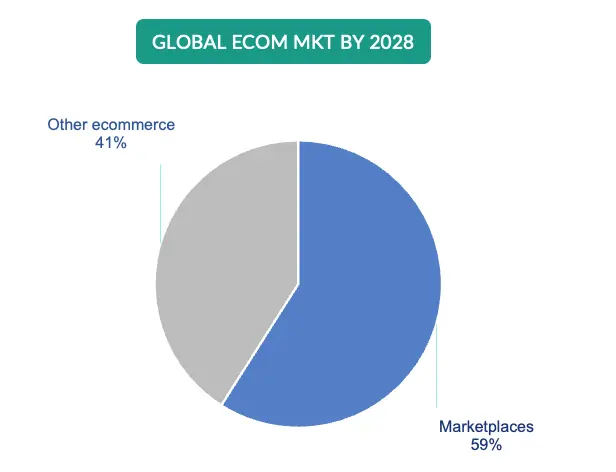
Marketplaces like Farfetch, MyTheresa and Zalando offer the opportunity to reach new consumers and increase sales volumes. However, large marketplaces put constraints to what brands can and can’t do and impose processes that fashion brands need to strictly follow if they want to be present on these fashion marketplaces online.
What is a Fashion Marketplace?
A fashion marketplace is an online platform that connects multiple fashion brands and retailers with consumers, allowing various sellers to showcase and sell their products in a centralized digital space. Unlike traditional e-commerce stores operated by single brands, these fashion marketplaces offer a diverse range of styles, price points, and brands, providing consumers with a comprehensive shopping experience. Whether it’s a mainstream online fashion marketplace or a niche luxury fashion marketplace, consumers can discover a wide variety of options.
Want to Master Marketplace Management?
Thriving on online fashion marketplaces isn’t just about being present — it’s about building the right strategy, managing your brand positioning carefully, and optimizing your presence across each platform. If you’re a fashion brand looking to optimize your presence across these platforms, keep reading this guide for expert insights. Plus, consider taking our Marketplace Management Online Course for an in-depth, hands-on approach to maximizing your sales and brand visibility across top platforms like Farfetch, MyTheresa, and Zalando. – leaders in the fashion online marketplace space.
What the Risks of Selling on Marketplaces?
Fashion Marketplaces present opportunities but also threats. For example, the high commissions fees that fashion brands have to pay to the marketplace fashion platforms, poses a significant threat to the profitability of the online ecommerce sales on fashion marketplaces.
Another important decision for fashion brands is whether or not selling on specific fashion marketplace platforms in order not to go into competition with the main ecommerce channel of the brand or with wholesale clients who are selling online on fashion marketplaces in specific regions. Decisions around luxury brand positioning also play a critical role when it comes to choosing the right platforms.
If you work in a fashion brands and you want to learn how to manage fashion marketplaces keep reading this guide and consider taking the marketplaces management online course. Learning to navigate marketplaces fashion effectively can help you scale while protecting your margins and brand image.
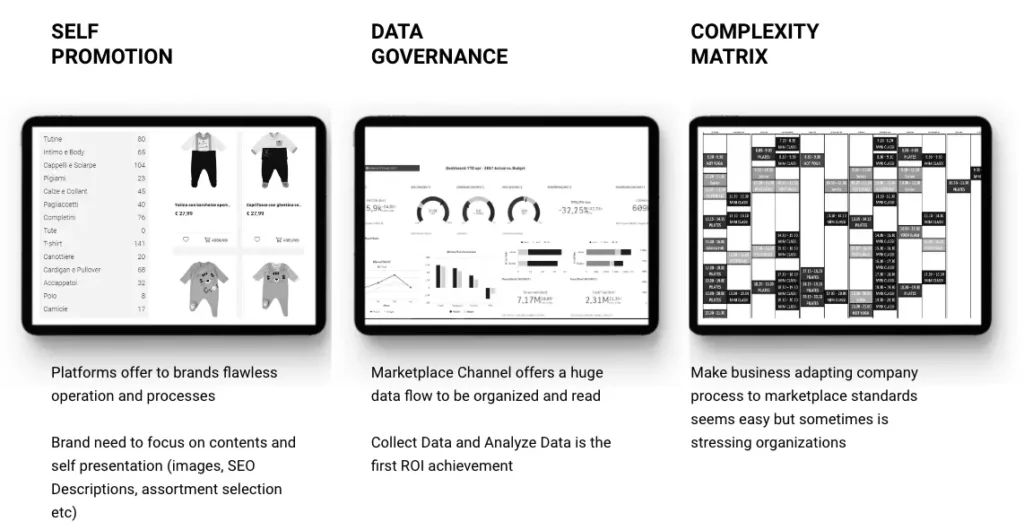
Use Cases: why selling on marketplaces.
A) The shoes brand A that is very strong in the southern Europe may utilize marketplaces in US and in the North of Europe to investigate the market potential leveraging the traffic of the marketplaces. For example the brand could integrate with Zalando, Galeries Lafayette and Miinto for the North of Europe and Neimann Marcus and Sacks Fifth Avenue for the US.
B) The clothing brand B needs to acquire new customers who may become brand lovers if they only tried the brand B products. The brand B decides to run a sales event on VeePee network where new customers can try the brand B products by buying the products with 50% to 70% discount. The happy customers will then become brands customer and buy also from the DTC ecommerce.
C) Brand C sells well jeans in North of Europe market but want to target people who buy total looks from luxury department stores, therefore Brand C decides to activate the Breuninger Marketplace and list a selection of products on the Department store’s marketplace so that the customers of the Department store can buy also the Brand C products when they shop for Looks
D) Brand D sees that its products are sold on a marketplace by a multitude of sellers who sell both second hand and new products, the Gross Merchandise value is estimated around 1 million Euros per year. The Brand D decides to open the official brand channel directly on the marketplace and acquired 75 percent of share of the brand sales on that specific marketplace.
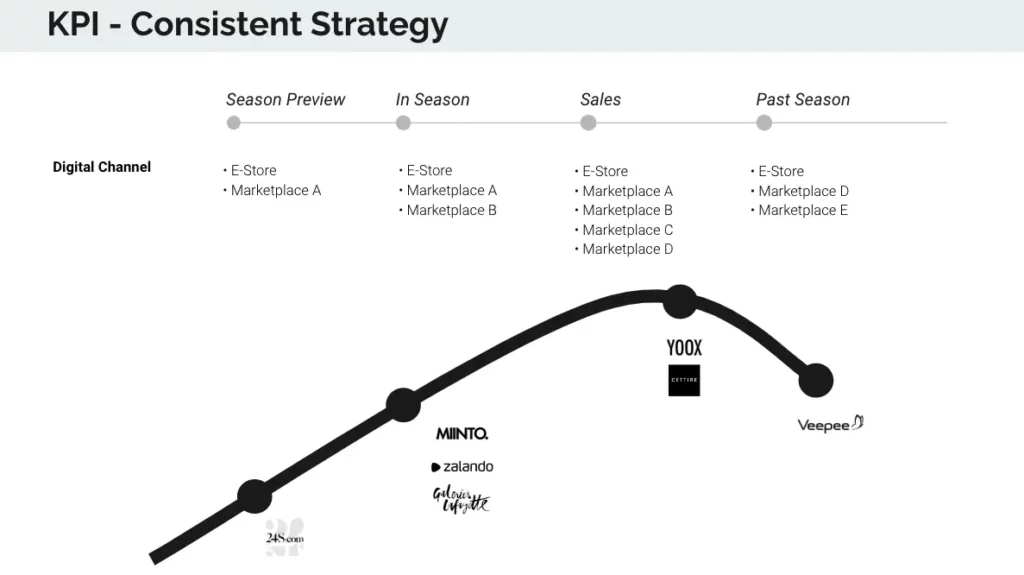
For any further information you can reach out to the authors: Enrico Fantaguzzi, Filippo Quattrone. About the authors
Fashion marketplaces such as Farfetch, Zalando and Nordstrom offer a significant opportunity for fashion & luxury brands to reach new customers across the world. However, succeeding in this competitive landscape requires a strategic approach, tailored to the unique challenges of luxury brand positioning and a careful planning of costs and revenues.
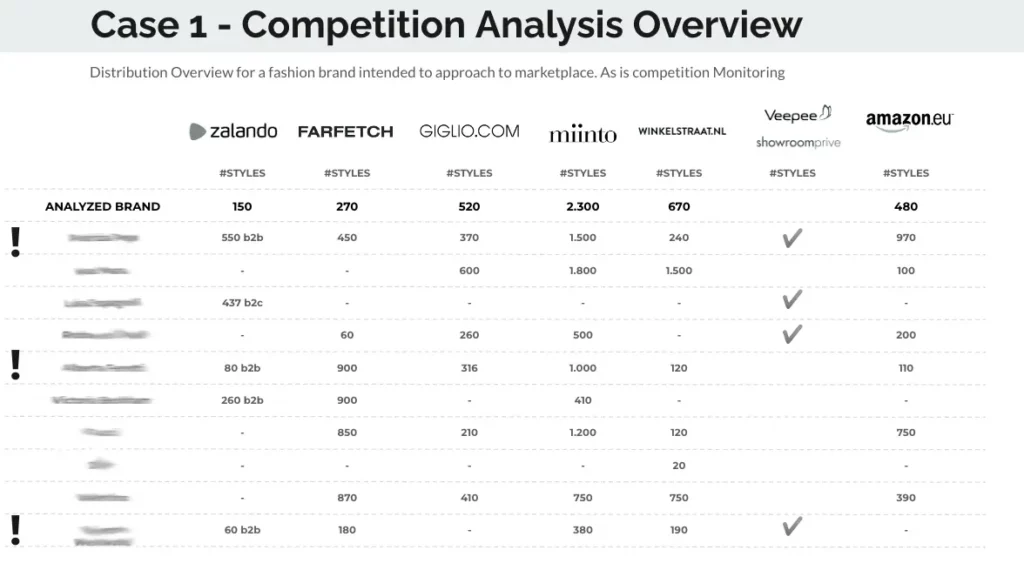
How Do the Marketplaces Work?
A fashion marketplace is an online platform that connects buyers and sellers where the sellers are the brands and the customers are the final consumers of the products, it’s a B2C business business model for the Brands.
Fashion marketplaces allow brands to virtually multiply the visibility of the products by publishing them on multiple sales channels (online marketplaces) while the products are sitting in the brand’s warehouse (Drop Shipping). These fashion marketplaces online enable scalable growth without upfront inventory relocation
Stock, prices, descriptions, images and fashion marketplace management strategy are controlled by the brand
Every time there is a sale on the fashion marketplace, the product is sold to the customer and shipped to the customer from the supplier – the brand or the seller.
Why Fashion Marketplaces Are a Major Opportunity for Fashion Brands
Selling on Marketplaces is important for fashion and luxury brands for a number of reasons:
- Internationalization: Marketplaces allow brands to reach new customers in many different countries.
- Low capex investments: Selling on online fashion marketplaces don’t require the set-up of an e-commerce platform and the costs are mainly variable.
- Low stock risk (Dropship Model): Fashion brands can sell the stock that they already have in their warehouse on multiple fashion marketplace online channels.
- New customer base: Marketplaces allow fashion brands to reach new customers.
- Reduce inventories: Marketplaces allow fashion brands to sell the same stock on different channels.
- Brand Image Control: The advantage of Marketplaces compared to resellers is that fashion brands can control price and image – critical for luxury brand positioning.
- Collecting Data: selling on Marketplaces will allow you to collect more sales data to analyse.
Ready to Maximize Your Brand’s Potential?
At Digital Fashion Academy, we know that marketplace fashion is reshaping how brands grow their digital presence and reach new customer segments. The online fashion marketplace space is more dynamic than ever, offering brands the chance to showcase their collections on global platforms like Zalando, Amazon, Farfetch, and Yoox. Each fashion marketplace online offers unique opportunities to boost visibility, drive sales, and strengthen brand recognition.
However, success in fashion marketplaces isn’t just about listing products — it’s about mastering fashion marketplace management, adapting to each platform’s structure, and aligning your approach with your brand’s goals, especially regarding luxury brand positioning. Whether you’re exploring luxury fashion marketplaces or scaling your reach through major online fashion marketplaces, the right strategy makes all the difference.
We help brands learn how to navigate the world of fashion marketplaces online effectively. Understanding the rules, algorithms, and customer expectations across every major fashion online marketplace, you can maximize your growth, protect your margins, and elevate your brand image. Ready to turn marketplace fashion into a strategic growth channel for your business? Let’s get started.
Stay tuned for more expert insights, tips, and tools to help you thrive in the world of online fashion marketplaces.
A List of Fashion & Luxury Marketplaces With a Brief Description
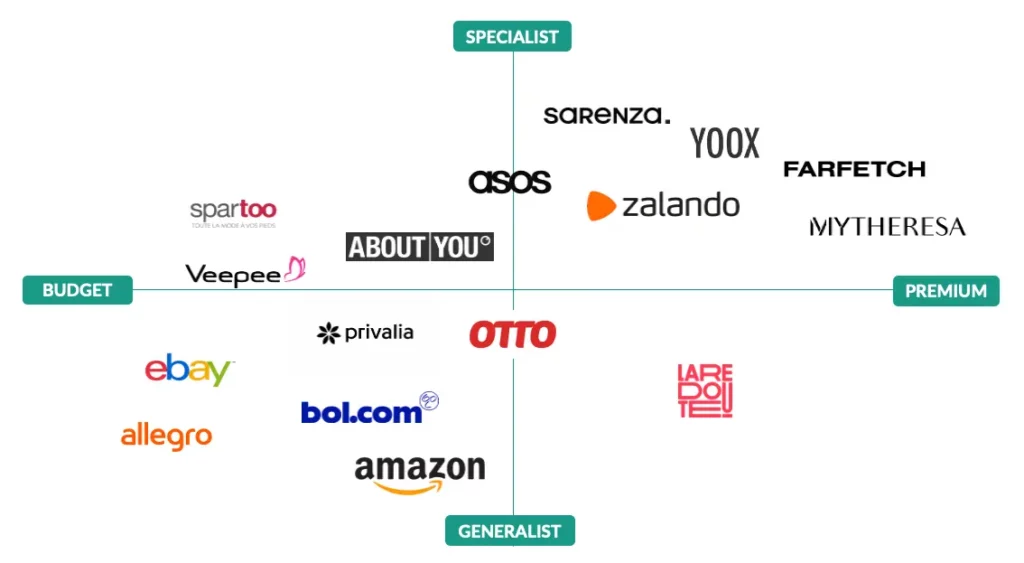
- Farfetch: A global marketplace for luxury fashion brands. It connects customers with brands from all over the world, and it offers a high-end shopping experience. Recently some brands from Kering Group have started to reduce their direct presence on this markeplace. Read more on Fashion Network.
- Breuninger: A German department store chain that has an online marketplace. It offers a wide variety of fashion brands, as well as home goods and accessories.
- Yoox: An Italian online retailer that sells a variety of fashion brands, including both luxury and contemporary. It also offers a resale marketplace for secondhand clothing.
- Zalando: A German online fashion retailer that sells a wide variety of brands, from affordable to high-end. It also offers a marketplace for independent brands.
- Miinto: A Danish online marketplace for fashion brands. It connects customers with brands from all over Europe, and it offers a wide variety of styles.
- Saks Fifth Avenue: An American luxury department store that has an online marketplace. It offers a wide variety of fashion brands, as well as home goods and accessories.
- Otrium: A European flash sale marketplace that offers discounts of up to 70% on fashion brands from all over the world.
- Veepee: A French flash sale marketplace that offers discounts of up to 70% on fashion brands from all over the world.
- 24s.com: A European luxury fashion marketplace that offers a curated selection of brands from all over the world.
- Tmall: A Chinese marketplace that offers a wide variety of products, including fashion, home goods, and electronics. It has a luxury section for high-end brands.
- Macy’s: An American department store chain that has an online marketplace. It offers a wide variety of fashion brands, as well as home goods and accessories.
4. How to Succeed in a Fashion Marketplace
Strategies for Selling on Fashion Marketplaces
Success on an online fashion marketplace requires understanding the marketplace’s audience and aligning product offerings accordingly. High-quality images, detailed product descriptions, and competitive pricing are essential. Additionally, leveraging marketplace fashion promotions and participating in seasonal campaigns can enhance visibility on both mainstream and luxury fashion marketplace platforms.
Optimizing Product Listings for Visibility
Optimizing your listings is a cornerstone of effective fashion marketplace management. Utilizing relevant keywords, clear titles, and comprehensive descriptions improves searchability within the marketplace. Incorporating customer reviews and maintaining high ratings also boost credibility and attract more buyers.
Leveraging Marketplace Algorithms and Promotions
Understanding and adapting to the marketplace’s algorithm can significantly impact product visibility. Engaging in promotional opportunities offered by the marketplaces – such as flash sales or featured listings, can drive traffic and increase sales. This is especially true for brands looking to strengthen their luxury brand positioning on curated fashion marketplaces.

Never miss an update
Sign up to our mailing list and receive updates on training programs, job opportunities and free resources.
What Are the Differences Between Drop shipping and Concession Models?
Here is a table summarising the key differences between drop shipping and concessions:
| Feature | Drop shipping | Concessions |
|---|---|---|
| Ownership of products | Merchant does not own the products | Merchant does not own the products |
| Inventory management | Merchant does not manage inventory | Merchant does not manage inventory |
| Shipping | Merchant does not handle shipping | Merchant does not handle shipping |
| Pricing | Merchant sets the prices | Supplier sets the prices |
| Commission | Merchant does not receive a commission | Merchant receives a commission on each sale |
| Marketing | Merchant is responsible for marketing | Supplier is responsible for marketing |
| Customer service | Merchant is responsible for customer service | Supplier is responsible for customer service |
Pros and Cons of Drop Shipping and Concession Models
Both drop shipping and concessions have their own advantages and disadvantages when selling on a fashion marketplace. Drop shipping is a more hands-off approach – often used in fashion marketplaces online, but it can be more difficult to control the customer experience.
Concessions, on the other hand, give the merchant more control over the customer experience within the fashion online marketplace, but it can be more time-consuming and require more upfront investment in fashion marketplace management.
The best approach for a particular merchant will depend on their specific goals and circumstances. If a merchant is looking for a low-cost, hands-off approach, then drop shipping may be the best approach. If a merchant is looking for more control over their brand image and customer journey – particularly in luxury fashion marketplaces – then the concession model may be the better approach.
Here are some additional factors to consider when choosing between drop shipping and concessions:
Markeplaces Integration and Workflow
The order management and the integration with marketplaces, can be quite complex and requires accurate planning, definition and organisation.
You can learn now how to organise the sales of your brand on markeplaces in the markeplaces online course by Digital Fashion Academy.
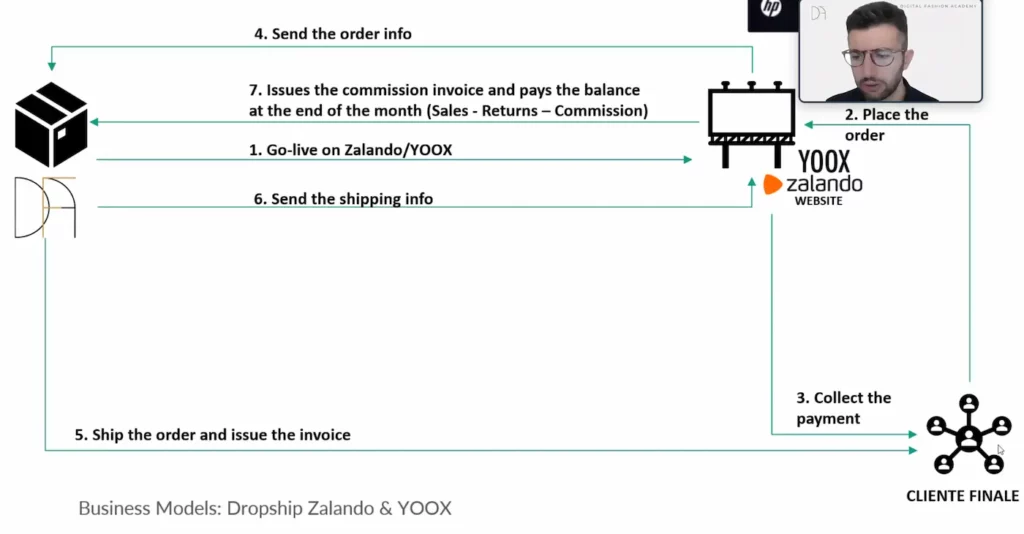
About the Authors

Filippo Quattrone
Head of Marketplace Unit – FiloBlu
Strategic management consultant supporting fashion brands to activate Marketplace channels end-to-end.
His careers spans +15 experience in different industries and international companies with increasing management roles working in Accenture, Ralph Lauren, Valentino and OVS.

Enrico Fantaguzzi
Co-founder at Digital Fashion Academy
Enrico Fantaguzzi is a fashion & luxury e-commerce professional and consultant. He has worked for brands such as Gucci, Tod’s, Woolrich and e-tailers like Yoox.
10 Questions About Fashion Marketplaces That We Answered in Our Online Course.
Before we deep dive into the business models of fashion marketplaces and we tackle specific aspects such as business planning and integration, you can find some straightforward answers the most common questions about fashion marketplaces:
- In which situations online marketplaces are an advantage?
- Marketplaces allow brands to open new markets where the brand doesn’t have specific local competences or they lack brand awareness. In this case brands can use marketplaces to expand brand awareness and sales.
- Another situation is when the brand’s product are already available for sale on the marketplace but they are sold by many different sellers, in this case the brand may want to take control of the channel by selling directly.
- Is there cannibalization between marketplace and Direct To Consumer (DTC) e-commerce?
- In order to establish if there is cannibalization we need to analyze the sell out prices and the products sold by Category and Best Sellers. Depending on the results of this analysis you may conclude if there is a potential cannibalization or synergy between the different channels. To find out more about this topic see the marketplace course.
- How to control the prices on online marketplaces?
- Brands can monitor the sellout prices on marketplaces by using specific applications that scan the marketplaces and provide the brands with results. In alternative fashion brands can delegate this analysis to service providers who manage marketplaces for fashion brands in outsourcing.
- What are the benefits of selling on digital marketplaces?
- Gather data about product preferences in different markets;
- Exploit fashion product lifecycle by selling new products on premium channels and off-season products on discount marketplaces;
- Marketplaces that are specialized for local markets can help the brands to grow brand awareness and sales in that specific market.
- Marketplaces allow brands to acquire new customers who generally buy on those specific marketplaces and turning them into brand loyalists.
- What are the rules to sell on marketplaces?
- In order to sell on marketplaces we need to follow the marketplaces Service Level Agreements (SLAs) for example for shipping and customer service
- Technical integration: connector software, datafeed and mapping specifications
- Content guidelines: product images description, marketplace brand page content;
- Implement Marketing and Advertising campaigns where possible and required.
- What are the pre-requisites to sell on marketplaces?
- Before selling on marketplaces the seller company needs to be ready to support the standard drop shipping processes which include:
- Logistics B2C capabilities: pick, pack, ship, stock management.
- Customer Service capabilities.
- Digital Production capabilities (Product images and descriptions).
- How to avoid price competition on Marketplaces?
- Price competition on marketplaces happens when multiple sellers list the same product on one or more marketplaces. The most frequent case is when a Wholesale client or Retailer also sells on marketplaces, for example when multi-brand boutiques sell on Farfetch. To avoid this situation brands may open their channel directly on the marketplace. By doing so the brand occupies organically the brand space on marketplace. (see use case D)
- In house or outsourcing, which one is best?
- One of the biggest challenges when starting to sell on a marketplaces is to learn all the specifications of the marketplace to create a product catalog that complies with the standards set by the marketplace. This process can take several months if the brand doesn’t have the skills in house and if there isn’t dedicated staff who can spend most of their time to work on the marketplace. Using an external service provider for integration of marketplaces can speed up to time to market significantly.
- What KPIs should we monitor on marketplaces?
- The overall goal of the marketplaces is to increase sales however there are some critical metrics that can determine the success of the brand on the marketplace. For example, a high return rate can negatively impact on the profitability of the channel due to the cost of shipping that are generally 100% paid by the brand. Therefore you need to look at the net margin or profit margin of the channel to evaluate the financial sustainability of the project itself.
- How to choose the right marketplaces for my brand?
- You need to choose the marketplace that fits your business model.
- You should choose different marketplaces for different geographical markets and for different product lifecycle, e.g. in-season, off-season.
- Do a benchmarking analysis of your competitors and analyse on which marketplaces they are selling.
Check list: is your brand ready to sell on fashion marketplaces?
- Introduction
- What are your goals and how are you going to measure success?
- Do a benchmarking analysis of your competitors
- Selecting the right marketplaces
- Understand your target audience and market reach
- Evaluating marketplace reputation, audience demographics and volumes of sales
- Understanding platform fees and policies
- Optimizing Product Listings
- Crafting marketplaces-friendly product titles and descriptions
- Create or edit product images to adapt to the marketplace
- Leveraging keywords and SEO to increase discoverability
- Implement the product feed following the technical specifications
- Pricing Strategies for Fashion & Luxury Markeplaces
- Understand and agreen on the discount policy
- Integrate the prices data flow via data feed / catalog or API
- Discuss and define the commercial and promotional calendar
- Agree on special promotions and sales events
- Branding and Visual Identity
- Create assets for marketplace brand home page
- Telling your brand story through product listings
- Create banners and other assets for advertising and communication
- Inventory Management
- Integrate the stock flow via a third party marketplace integrator or direct integration
- Avoiding stockouts and overstocking
- Strategies for seasonal collections and limited editions
- Fulfillment and logistics considerations
- Customer Service & Operations
- Integrate and test the order data flow: sales and returns
- Ensure the customer service is able to handle the marketplaces customers enquiries
- Handling customer inquiries and complaints on marketplaces
- Utilize customer feedback to improve brand reputation
- Marketing and Promotions
- Leveraging marketplace advertising and sponsored listings
- Cross-promotion with social media and other channels
- Collaborating with influencers and brand ambassadors
- Monitoring Performance and Analytics
- Tracking sales, conversion rates, and key metrics
- Using data insights to refine strategies and decision-making
- Identifying growth opportunities and potential challenges
- Intellectual Property Protection
- Strategies to safeguard your brand’s intellectual property
- Dealing with counterfeit products and unauthorized sellers
- Enforcing brand guidelines on marketplaces